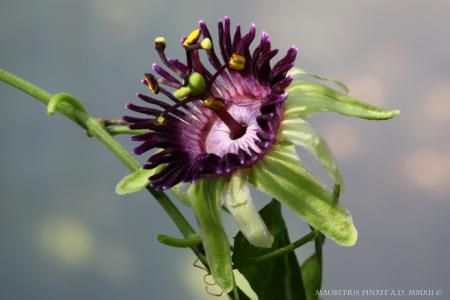
SUBGENUS: decaloba
SUPERSECTION: decaloba
SECTION: decaloba
GEOGRAPHICAL DISTRIBUTION OR ORIGIN:
Organ Mountains, Brazil.
MINIMUM TEMPERATURE: 10 °C
IDEAL MINIMUM TEMPERATURE: 12 °C
SYNONYMS: P. maculifolia Mast., P. organensis var. marmorata Mast., P. porophylla Vell.
ETYMOLOGY: Denominazione di origine geografica: montagne Organ, Brazile.
DESCRIPTION:
P. organensis var. marmorata (syn. P. porophylla following the revision of its name) has very colourful leaves with an unusual shape. They are in fact bilobate with a truncated upper margin. Sometimes there is a hint of a third central lobe. The texture is slightly leathery and the blade is shiny and bright.
On their dark green surface, nature has enjoyed painting red and yellow spots and streaks that follow the course of the two external ribs. This coloured marbling, despite having an undefined outline, runs across the leaf in such a regular and precise way, it seems to want to highlight the lines of the veins themselves. On some leaves it is completely yellow, on others red, and on still others the two colours combine or blend into each other. This depends on the growth phase of the leaves themselves: when young they tend to be red, turning progressively yellow as they age. More or less intense light also has an influence on accentuating or modifying the shades and colours.
This climber grows in a dense, branched fashion, at times acquiring a precious brocade fabric appearance.
Those who want to grow this passionflower will therefore have to design suitable support to enhance the beauty of its foliage. Rather than a three-dimensional shape such as an obelisk, I would recommend the espalier approach in order to extend the foliage over a flat surface. Growth, in the beginning, must be guided with care in order to arrange the main shoots at suitable distances along the supports. We must then let nature take its course. The leaves will arrange and orient themselves spontaneously and elegantly. Removing the apical buds, especially in slightly bare specimens, will serve to stimulate the growth of lateral branches with a considerable increase in the number of leaves.
Don't expect particularly interesting flowers from P. organensis var. marmorata (P. maculifolia). As is often the case, when the leaves are showy, the flowers are almost insignificant. The flower reaches a size of about 4 cm and has sepals, petals and a corona of cream-coloured filaments with purple hues.
The cultivation rules for this plant are simple: it requires rich, well-drained soil, being very careful not to overdo the watering as it suffers from stagnant water at the roots. It needs a bright, warm position, even in winter, although it can tolerate drops in temperature to around 6-7°C.
I believe that P. maculifolia is an ideal houseplant due to its spectacular and showy appearance.
The safest
method of propagation is from cuttings. Propagating from seed, in fact, may
produce plants with poorly accentuated colours.